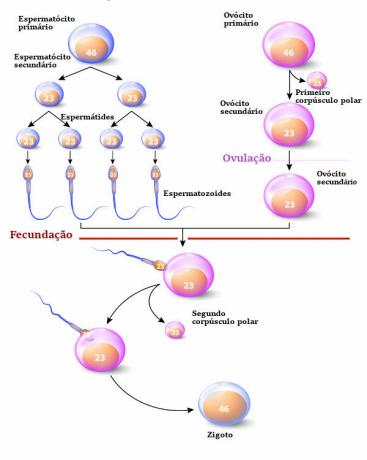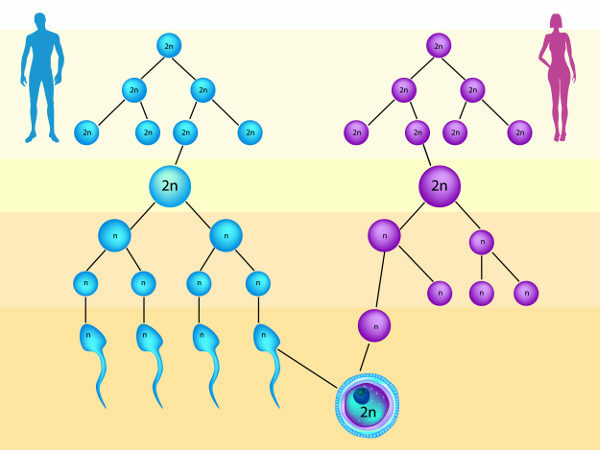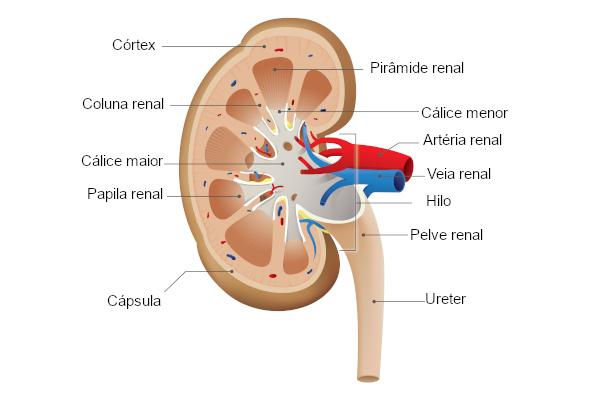Gametogenesis is the process in which male and female gametes are formed. The gametogenesis that leads to sperm formation is called spermatogenesis. The formation of mature oocytes, on the other hand, occurs through the process called oogenesis or oogenesis.
Read too:genital system
→ Where does gametogenesis take place?
Gametogenesis is a process that takes place in the male and female reproductive systems. THE spermatogenesis occurs in the seminiferous tubules, which are located in the testicles. In the woman, the oogenesis occurs within the ovaries.
→ Types of gametogenesis
There are two types of gametogenesis: that which occurs in men (spermatogenesis) and that which occurs in women (oogenesis or oogenesis). Spermatogenesis gives rise to sperm and occurs in the testes, while oogenesis is responsible for the origin of eggs and occurs in the ovary.
Mind Map: Gametogenesis

* To download the mind map in PDF, Click here!
Read too:What is gamete?
Both spermatogenesis and oogenesis involve processes of
mitosisand meiosis(cell division processes). Meiosis, a process that reduces the amount of genetic material, is essential for maintaining the proper amount of chromosomes for the species. As the male and female gametes fuse during fertilization, they must have half the chromosomes of the species to ensure that the diploidy of the species is re-established.
Observe the process of gametogenesis in men and women.
→ oogenesis or oogenesis
oogenesisit is the process of formation of the female gametes, that is, it leads to the formation of the egg. This process takes place inside the ovaries and takes years to complete. Oimmature oocytes start their development still in the embryonic stage, however, its full development only occurs at puberty, when the secondary oocyte is released (ovulation).
Oogenesis starts from the germ cells, which will divide by mitosis, forming the ovogony. Ovogonias initiate successive mitotic divisions, giving rise to cells that continue to divide by mitosis and others that initiate meiosis and stop its division. These cells, called primary oocytes, remain in prophase I, completing their maturation only at puberty. It is estimated that a girl at birth has 1 to 2 million primary oocytes in her two ovaries.
At puberty, ovarian cycles begin, and a follicle begins to develop with each cycle. The primary oocyte, stimulated by hormonal factors, completes meiosis I, forming two unequal-sized daughter cells (secondary oocyte and the first polar body). The secondary oocyte initiates the second meiotic division, which is interrupted at metaphase. Osecondary oocyte will be released at the time of ovulation, and meiosis II will only resume if there is fertilization.
Do not stop now... There's more after the advertising ;)
If fertilization does not occur, the secondary oocyte degenerates about 24 hours after ovulation. If fertilized, the oocyte resumes the second meiotic division, forming the second polar body and the egg.
→ spermatogenesis
THE spermatogenesis it is the process of formation of male gametes, that is, sperm. Unlike oogenesis, spermatogenesis is continuous throughout the life of adult males. This process takes place in the seminiferous tubules, which are coiled inside the testicles.
On average, the spermatogenesis process takes seven weeks and starts with the mitosis of germ cells present in the testes at puberty in man. Mitosis in these cells will form spermatogonia, which will divide by mitosis and form type A and type B spermatogonia. Type A spermatogonia are those that continue to divide, giving rise to new spermatogonia. Type B spermatogonia, on the other hand, undergo mitosis and originate primary spermatocytes. The primary spermatocytes will initiate the meiosis process, which will lead to a reduction in the number of chromosomes at the end of the process.
At the end of the meiosis I process, we will have two secondary spermatocytes, each with half the number of chromosomes of the primary spermatocyte that gave rise to it. The two secondary spermatocytes originating at the end of meiosis I then perform meiosis II, giving rise to four spermatids.
The spermatids then start the process of spermiogenesis, which will lead to the formation of mature sperm. In spermiogenesis, several important processes occur, such as:
Acrosome formation: the acrosome, a special vesicle located in the region of the sperm head, has important enzymes to guarantee the penetration of sperm into the oocyte.
Reduction of cytoplasm.
Development of the scourge: process that will ensure the efficient movement of sperm.
After the spermiogenesis phase, sperm are released into the seminiferous tubule.
→ Differences between spermatogenesis and oogenesis
Spermatogenesis and oogenesis are processes that result in the formation of gametes, however, they occur in different ways. Here are some differences between these two processes:

Gametogenesis that occurs in men differs from that which occurs in women.
Spermatogenesis occurs in men during adolescence and adulthood. Oogenesis is interrupted in women around 50 years of age.
Meiosis that occurs in spermatogenesis generates four sperm, while that which occurs in oogenesis gives rise to only one gamete.
- Spermatogenesis occurs continuously, while oogenesis has long periods of interruption.
By Ma. Vanessa Sardinha do Santos


